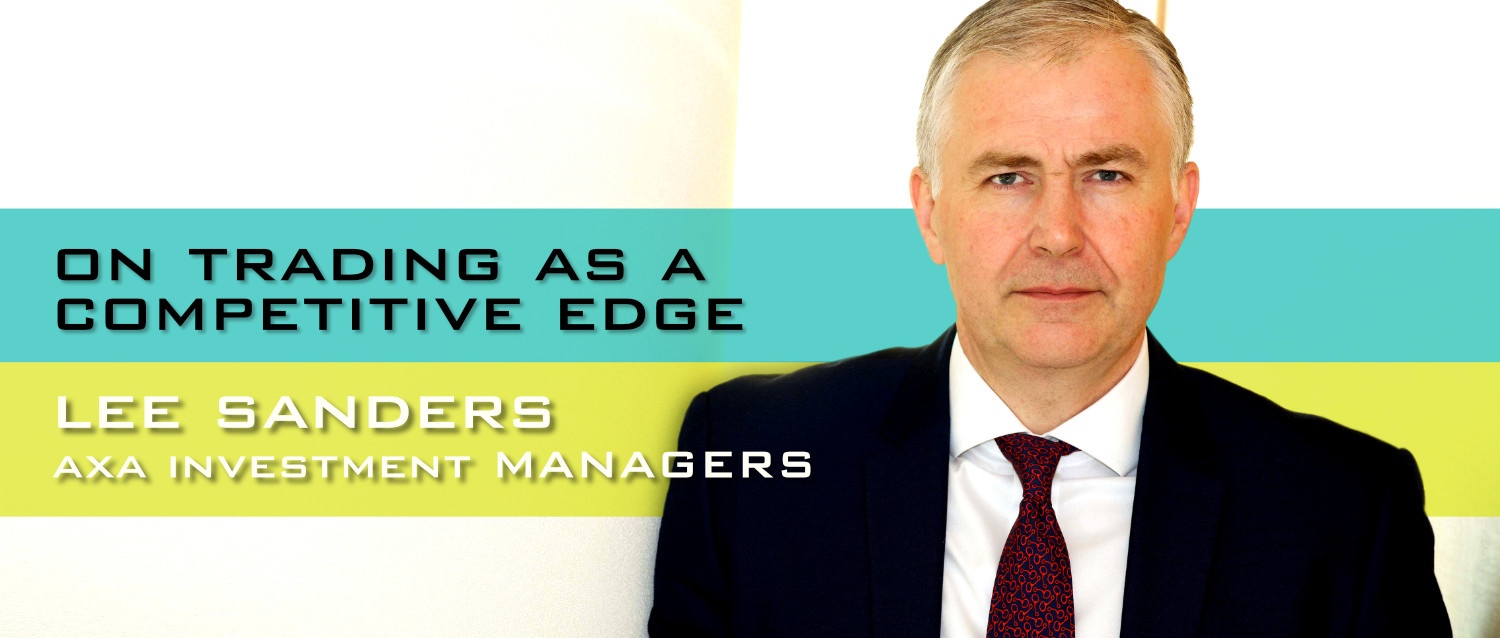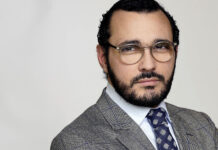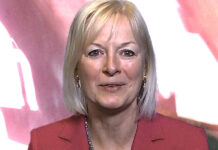Lee Sanders, head of Head of Execution at AXA Investment Managers believes that increasing automation is the biggest issue on buy-side trading desks.
How has the evolution of investment strategies impacted the skill set traders need?
The skill set we use has changed. Historically the intensity was different. When the portfolios were a lot more active, you had more ownership over the position than the active fund manager had. You tried to get them in and out, knowing the time horizon, and the alpha for the trade.
With the rise of more passive business there is such a focus on the implementation of the portfolio; getting into the market; optimising transaction cost analysis; mitigating cost; and trying to get inside bid-offer spreads is key. It comes down to looking at the different arrays of execution tools that you have. This is more about data and understanding the information we have to make a differentiation in the execution piece.
That intensity for some of these mandates occurs for a couple of weeks, then it tails off, as the bulk of those funds are invested, then it becomes more a maintenance process. Engagement with the market then changes.
How much is automation affecting trading today?
Automation has the biggest focus on buy-side desks at the moment. We are looking to automate processes, whether they be pre trade piece or actual execution. Most buy-side desks will use their data to define high touch and low touch flows. Low touch will use our data and information, alongside the capabilities of OMS/EMS and ECNs, to get the best automated outcome for our clients. This is key in our development now that our new OMS is up and running. We can do a lot more, and more efficiently, by making very incremental changes to the workflow around automation. We want to drive more connectivity, for more STP and reduce cost.
What would an automated workflow look like?
In essence it looks like the desk we currently have but is simply more efficient and more capable of handling larger scale. If there are no pre-trade manual checks then the activity orders that fit a certain criteria can auto-route from the OMS to an ECN, and if they hit the expected level or better, given the criteria attached to the execution, we can get more deals through and transaction cost analysis (TCA) shows that the execution is as good or better than manual trading in the ECN.
The desk of tomorrow is high touch/lower touch with quant and data at the forefront, and using this data efficiently will continue to lead to a better outcome for our clients. We also see more connections and streaming prices coming into the OMS, or EMS, with more potential to click and trade. The ECNs still feature very prominently in the workflow.
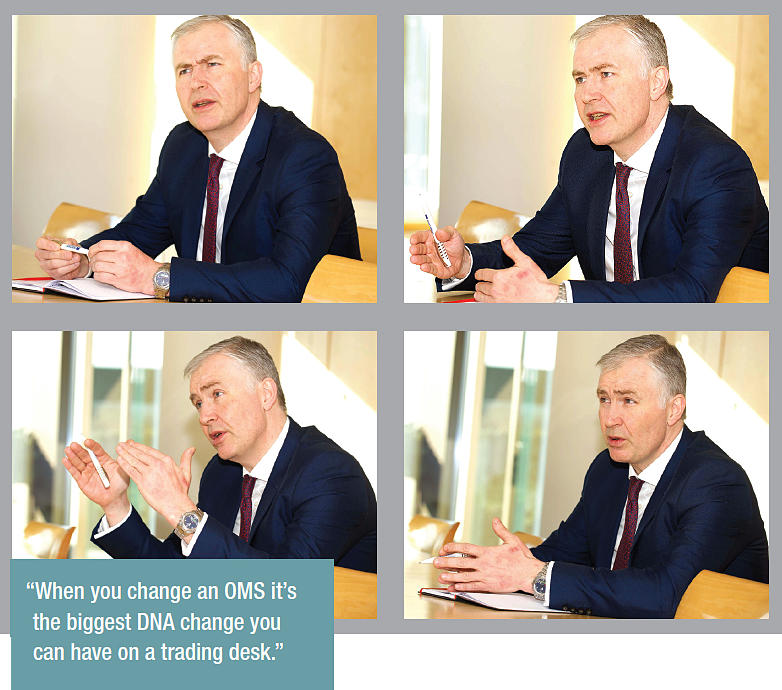
Does that apply to primary markets as well?
We are very, very keen to see the primary market head into an automated workflow. At present it is time consuming and there is a lot of risk involved with the primary market (see p.35 Traders grapple with bigger syndicates and more issuance). For a desk like ours in London, where we are managing flow into the US close, as well as emerging markets, information can change through the line-up until hours after the London close, so automating that has a lot of upside in making sure we have oversight and correct information. We have automated it internally; the last piece is how we automate it to the market in a standardised way. We want to take the new issue file in by FIX protocol and confirm orders electronically. This is yet again about efficiency and scale and STP is at the heart of what we want in primary.
A year in, what has changed on the trading desk as the result of MiFID II?
The quality of the execution hasn’t changed significantly one way or the other, but the process around how we execute, and what we do to justify and document execution has. We saw quicker booking times, and more platform trading whether request for quotes (RFQ) or process trades.
There is a push towards using trading platforms, but banks remain very focussed on their key counterparts, and we have been very focussed on where we get our liquidity from. Platforms come and go, but the fixed income market still looks to liquidity providers to know their position.
When we consider operational efficiency and operational risk, the more trades we get onto platforms that are confirmed quickly, the less risk. I am all for that.
I thought at times that we would find less blocks of liquidity, but we found fantastic blocks of liquidity this year.
Has there been any impact on the sell side?
Interacting with their clients is more time consuming. If we ask them for a price they now have to record that whereas previously they haven’t. As a result it’s a lot more cumbersome for them to interact, check everything is clean and audited. We are fortunate to be covered by strong sales teams who know what we are trying to achieve.
What has triggered their push towards direct connectivity?
I think the main driving force of banks – and how they look at e-commerce – is purely down to cost. Beyond the multilateral trading facility (MTF) concept, which ECNs cover well, definitions get a bit grey. You get into the world of systematic internalisers (SIs) and organised trading facilities (OTFs), particularly where market auctions and central limit order books are included. Banks simply want to get their prices and data as easily and quickly to their clients.
What is your expectation for European rules – such as MiFID II – to reach the US and Asia Pacific?
Regulation has been full on in Europe – it’s been as intense as it can get. I don’t think the US wants to get more aggressive in financial market regulation, especially not with the current president. Asia Pacific jurisdictions are largely just watching to see how it impacts Europe, and then see what the tangible benefits are.
Of course, if any markets don’t look like they are treating clients fairly they will have to catch-up. People do try to legitimise and globalise core standards, we saw that practically with the global code of conduct for FX. Codes are a great thing, but they don’t resonate with everyone, there have to be global standards for regulation.
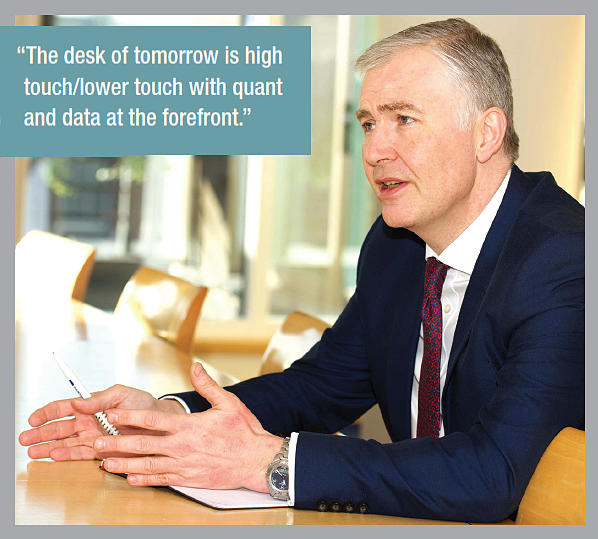
How has supervision of trading changed within your role?
A couple of years back we established the Trading and Securities Financing (TSF) Business Quality Team with oversight over all of the trading. So as a head of desk I see all of the trades, I can challenge any traders, and I am involved in the execution process. I see first-hand which counterparts we are using, why we are using them, price exploration, price capture, axes, and best outcome and data.
I am deeply involved in that with the traders, fund managers and compliance, but what is very positive in our business model is that we have a layer of people above the execution process who have oversight on all of those trades, i.e. they monitor the trading process and challenge it, such as ‘we looked into your database and you had better axe offers away, why didn’t you aggress those?’ Or ‘if you only asked one person, how can you evidence that that is the best outcome for the client?’ This is a great process to ensure traders are governed by ensuring best outcome on every trade.
Has increased supervision improved trading?
It makes you think about how you approach every trade and that’s what I have instilled into the traders. And if you can’t justify it to yourself, you wouldn’t be able to justify it to the client. You can’t be flippant about any trade. You are going to be challenged. We continually strive to make the process a lot more transparent.
We have a lot of very high level data around everything we do in trading and we use that internally to know where will be a good place to execute, we look at axes coming in to see whether there will be new challenges to that liquidity stream and, if push comes to shove, whether we can still work with the big liquidity providers, but maybe push them more on price if we have greater transparency around that process. I think potentially having a challenge to every trade is very helpful, extremely healthy, and whether it be from the head of desk, or a separate division within a trading organisation, I think that’s here to stay. That’s a positive for the business.
How competitive is the talent market?
I have recently hired a new person on the trading team who doesn’t have a lot of trading experience. The skill-set we are looking to develop is more about programming, understanding the data, touching on quant, and an understanding of order themes – the dynamics are constantly evolving so fresh talent is very useful.
We can learn a lot from people born into a digital age, because everything is so intuitive to them. For people who are 20 years in, things have changed radically. A fresh perspective has to be taken. What we have got to look for more is diversity within the talent group. You really want four people on the desk with different skill sets. You want an ‘A-Team’ set up, using specialist skillsets which overlap.
Does more electronic engagement – from messaging to auto execution – and supervision levels change the type of stress traders handle?
If you don’t really handle stressful situations well, you probably shouldn’t be on a buy-side trading desk. It is, has, and always will be stressful. The stress manifests itself in different ways.
There is a lot more transparency around trader performance, it is quantified, and we have stringent adherence to best execution policy. That can make you stressed, if you don’t buy into it.
Traders are not going to be let go or promoted by the amount of trades they do, or if some don’t work out as well as they wanted. We don’t want people sitting at their desks frightened to trade, because there is too much to lose if they mess up. We want them comfortable with the framework in which they work, and what is expected from them by the organisation.
Younger traders might find voice trading more stressful, because you can almost hide behind electronic messaging and trading; that is something we work on a lot.
How are markets at present from the perspective of the trading desk?
Inventory held by banks, especially in the credit market, is very low. In the sterling market that can be tied back to Brexit, but it has also been true in the euro and the dollar market. We always thought 2019 was going to be a challenging year from a trading desk and liquidity perspective. Fund management desks are being more directional and cyclical. Rates markets have enjoyed a period of very good liquidity that has allowed us to position ourselves, but things can change – the warehousing of risk, appetite for risk, a lack of follow-through from alternative liquidity providers, a muted impact from algorithmic trading in the rates market – those can all mean there is a challenge.
As a trader you have got to keep an open mind; be very focussed on quick liquidity changes and changes of sentiment. We have seen event risk in the EM world, and definitely in sterling with Brexit. We expect a bit more of that.
Which initiatives are you focused on?
When you change an OMS it’s the biggest DNA change you can have on a trading desk. Everybody will look at that change very quizzically. The functionality on our new system is great and we are channelling it to build something down the road which will be fantastic. It’s good, it’s fit for purpose, but the potential is what is important.
Our real focus has been getting the OMS sorted. We calibrate the proprietary systems, and then look at how the ECNs complement that. We have been very happy with the workflow via the ECNs, we are looking at using them to automate workflows such as auto execution, in addition to put-through trades, liquidity scoring, etc.
There is a lot of good work, but if you take a step back and you look at those ECNs, much of their development is about their data sets, more than their day-to-day functionality. We are very focused on developing our proprietary capability, our prices, and our bank connections and data handling.
As things are becoming more electronic how does that affect counterparty relationships?
Whilst workflows become increasingly automated, you want traders to work on relationships with our counterparties to gain access to balance sheet in order to execute extremely large block transactions, so they know who to go to, and what cost that balance sheet should be. We will continue to have a very good, personal relationship with sales teams, the traders, the relationship managers and people who command balance sheet. We also have strong relationships with the ECNs as these have helped STP and cost saving.
You really can’t do that with a machine, you have to get in front of your counterparties and the people who run the electronic business, make them feel comfortable and for them to make you feel comfortable. It’s a symbiotic relationship. Of everything that has changed in the lifetime that I have been in this business, the thing that hasn’t is the need to get access to those people.
How do you see the end of QE hitting trading behaviour?
In unwinding it, the change of investor appetite is an unknown. The investor base moved into EM as a result of QE in the developed world. Will the reversal mean an unwinding of that, or will it be countered by a new wave of tourists looking for yield, and at what level?
We talk a lot about clearing levels in markets now and where there is activity, or where activity is more comfortable. The effect of QE for fund managers, traders, and investors as it unwinds is pressure to assess where fair value is going to be. Price formation will be more challenging. Whatever happens TSF are in a great place to ensure the best outcome for our clients – that is our DNA.
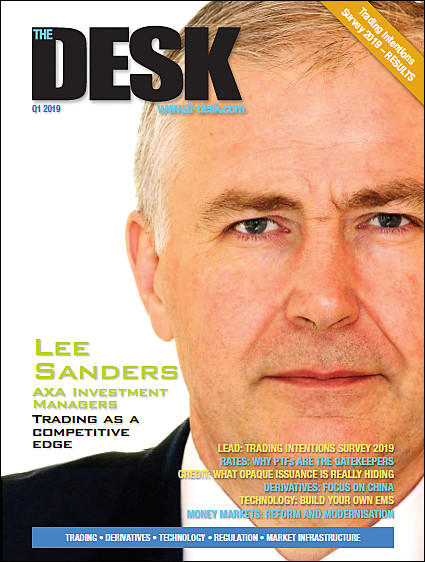 Biography:
Biography:
Lee Sanders is head of execution for FX and for UK & Asia fixed income trading at AXA Investment Managers. He joined Sun Life Investment Management in 1991, prior to its takeover by AXA IM, as a member of the US equities team. He moved into the fixed income team in 1994 as an analyst then an investment manager. In 2002, he moved to Trading & Securities Financing (TSF) to help establish fixed income, foreign exchange and money market dealing, taking responsibility for fixed income execution in the UK and Asia in 2012.
©The DESK 2019
©Markets Media Europe 2025

